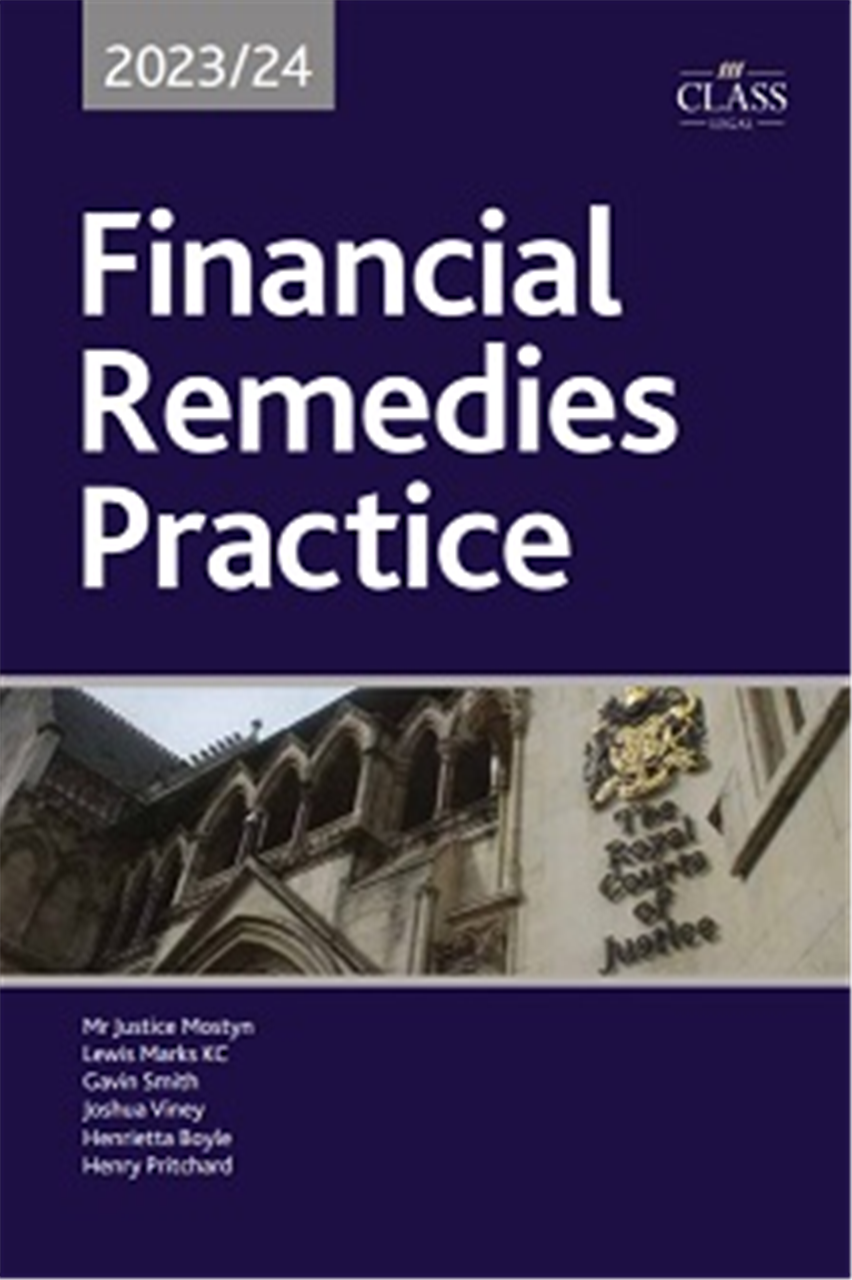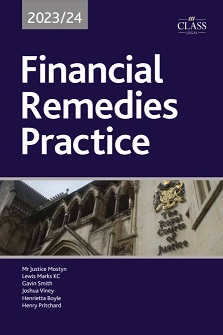
Financial Remedies Practice 2023/24 – a Review
Published: 05/09/2023 21:56

As the summer draws to a close, even with school days long behind many family lawyers, September brings with it a sense of new beginnings. But, instead of focusing on a new uniform and pencil case, one of the things we should be looking at are the key textbooks to take with us into the next academic year of practice.
And that brings me to the latest edition of the Financial Remedies Practice 2023/24. Now in its twelfth edition, this is a must have textbook for all family lawyers with a financial practice. The quality of the commentary is as you would expect with such a glittering list of writers (Mr Justice Mostyn, Lewis Marks KC, Gavin Smith, Joshua Viney, Henrietta Boyle and Henry Pritchard) having studiously worked on this edition.
The text takes the same format as with earlier editions, pulling out the Family Procedure Rules relevant to financial practice and providing expert commentary on the way the Rules should be read, and how they have been interpreted and applied by the court.
So, what is new in this edition as compared with earlier editions?
- The commentary at Part 3A has been updated to capture the accommodations being made for vulnerable witnesses, including the impact of the Domestic Abuse Act 2021 (‘DAA 2021’) and the introduction of ‘qualified legal representatives’ to conduct cross-examination where required by the DAA 2021.
- The commentary at Parts 20 and 33, which reflects the court’s powers to grant injunctions, with reference to the case of Convoy Collateral v Broad Idea International Ltd [2022] UKPC 703.
- The commentary at Parts 5 and 36N which address the digital transformation, and give detailed guidance on the online ‘portal’.
- The commentary at Part 33 deals with important changes to the general enforcement application.
- Significant expansion of the commentary at:
- Part 27, which examines the current debate regarding open justice in financial remedy cases (perhaps not surprising with Mr Justice Mostyn’s authorial input); and
- Part 28, which builds upon the case law on litigation conduct and costs.
As with any textbook, there has to be a ‘cut off’. The law in this edition is accurate as at 31 December 2022, but there are two critical notes in the preface which are worth flagging:
- The Standard Orders (2017–18, which are addressed in the Commentary at Part 5), were the subject of a full review. The Advisory Note of Peel J dated 17 May 2023 together with the new house rules and zip-files were released on 17 May 2023, on the eve of sending the proof of the book to the printers.
- The final report of the Financial Remedies Court subgroup of the Family Transparency Implementation Group was anticipated when the commentary at Part 27 was written. Any financial remedy practitioner will know this issue has featured in many of Mr Justice Mostyn’s recent reported decisions (and this is also clear from the comprehensive commentary at Part 27), but the report was not published until 18 May 2023.
It goes without saying that the commentary at Part 9 (Applications for a Financial Remedy) is incredibly useful.
The other chapters and features which especially stood out to me were:
- Part 4 (General Case Management Powers), the commentary of which spans some 66 pages, as compared to the rules which are set out in 9 pages. The detailed commentary covers the principles underpinning applications to set aside financial orders, with consideration of the impact of fraud on final orders. The commentary also looks at Joinder applications, an issue which appears to be of increasing relevance in finance cases, especially in the current economic climate with more clients relying on financial support from family members, or more generally finances becoming embroiled with third parties outside of the marriage.
- Part 7 (Procedure for Applications in Matrimonial and Civil Partnership Proceedings), which very succinctly pulls out the relevant financial rules from those which apply to divorce, nullity and judicial separation.
- Part 18 (Procedure for Other Applications in Proceedings), another essential chapter for finance practitioners, provides a concise and essential overview on making Part 18 applications.
- The Table of Cases is a helpful tool, spanning some 72 pages (which speaks volumes as to the comprehensive commentary in this textbook). This tool could be further improved by arranging the cases with reference to the Rules, perhaps with subheadings following the same structure as the rest of the book (if only to provide readers with the ability to see the relevant cases rule by rule at a cursory glance, rather than having to cross reference the page numbers).
- Other helpful features include:
- The inclusion of the summary of Financial Remedies Court in table form, showing the zones, courts and lead judges as at February 2023.
- Discussion of the FRC key documents, which have not yet been adopted by the FPR but which obviously form a significant part of the day to day working life of practitioners.
In summary, this textbook deserves a place in the library of every law firm and Chambers with a financial remedy practice. It is an unrivalled and authoritative guide to financial remedies procedure, and I would urge all practitioners to pick up this textbook.












